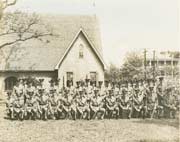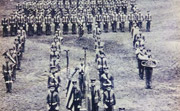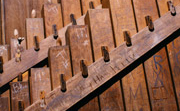Student Life at Porter Military Academy



“Most of my youth was spent on the campus and the Chapel played an important part in my formative years and years of my schoolmates and “Porter Boys” since its inception. I remember how we attended chapel services every morning before classes; Protestant, Catholic, Jew and Greek alike without any protest to the Supreme Court by a dissentent parent. We sang Onward Christian Soldiers accompanied by an old hand pumped organ played by a retired Marine Sergeant who also instilled in us true American History and pride in our traditions and institutions.” George J. Magwood, a PMA graduate, in a letter to Medical College President, Dr. H.R. Pratt-Thomas, October 1, 1964.
Students from throughout South Carolina's Lowcountry boarded at the school or attended during the day. From its beginning, the school accepted students from all faiths.
The school offered students a broad education ranging from Greek language to woodworking to athletics. The school day began with bugle call, breakfast, and chapel. Over time, facilities grew to include a dormitory, an infirmary, library, classroom buildings, rifle range, tennis courts, a parade ground, and the notorious “bull ring” where detention students were made to march.
In 1963 the Medical College of South Carolina purchased the entire Porter campus, including the chapel, for the expansion of the medical complex. At that time, Porter Military Academy merged with the Gaud and the Watts schools and relocated west of the Ashley River under the new name, Porter-Gaud School.
